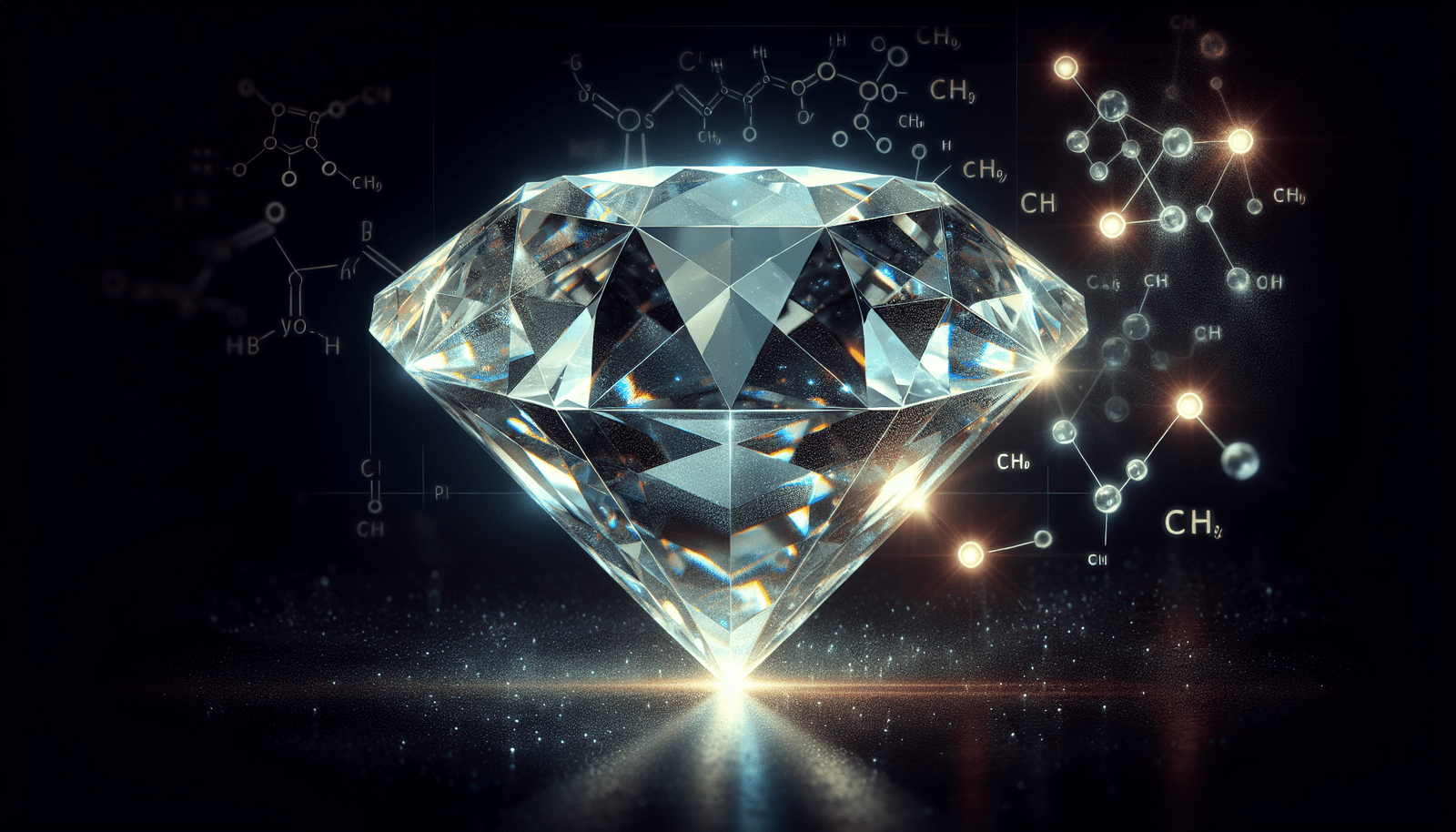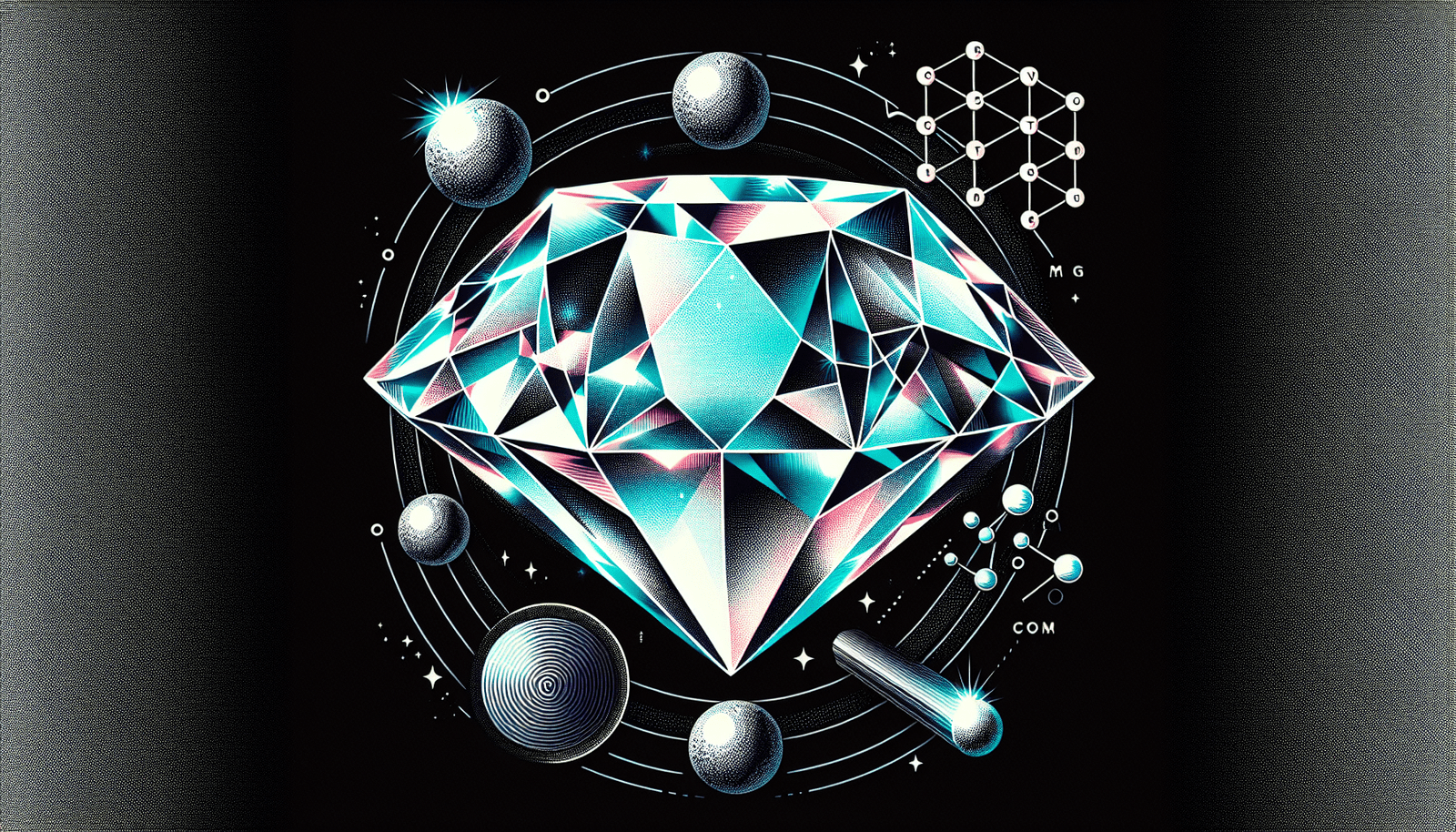Have you ever wondered what diamonds are really made out of? They grace the fingers of brides-to-be, shimmer in jewelry stores, and adorn royalty, but these magnificent gems start from humbler beginnings than you might expect. The journey of a diamond from the deep Earth to a glittering status symbol is nothing short of fascinating. So, sit comfortably as we unravel the complex geological, chemical, and even astronomical processes that form these precious stones.

The Basic Composition of Diamonds
The Elemental Structure: Carbon in its Splendor
You might be surprised to learn that diamonds are made entirely of just one element: carbon. Though they share this trait with graphite (like the stuff in your pencil), the way the carbon atoms are arranged makes all the difference. In a diamond, carbon atoms are bonded in a remarkably strong crystal lattice that gives these gems their legendary hardness. This arrangement is known as a “tetrahedral” structure, where each carbon atom is bonded to four others.
What Makes Carbon So Special?
Carbon is unique due to its ability to form multiple stable bonds with itself and other elements. This versatility allows it to create a wide variety of structures, from the flexible chains in plastics to the rigid lattice in diamonds. The strength of the bonds in diamonds makes them the hardest natural material known to man.
The Formation Process: From Carbon to Diamond
Natural Diamonds: Formed Deep Within the Earth
The creation of natural diamonds occurs about 150 to 200 kilometers (90 to 120 miles) below the Earth’s surface. At these depths, carbon experiences extreme conditions—temperatures of about 1,000 to 1,300 degrees Celsius (1,800 to 2,400 degrees Fahrenheit) and pressures of 45 to 60 kilobars (650,000 to 870,000 pounds per square inch). In this high-pressure, high-temperature (HPHT) environment, carbon atoms bond in a tetrahedral structure to form diamonds.
The Role of Kimberlite Pipes
These natural diamonds don’t stay buried forever. They make their way to the Earth’s surface via volcanic eruptions. Kimberlite pipes, the geological formations left behind by these eruptions, serve as the primary conduits for diamonds. Over millions of years, natural erosion or human mining exposes these diamonds.
Synthetic Diamonds: Mimicking Nature
Humans have developed methods to replicate the natural diamond formation process. One common method is the High Pressure High Temperature (HPHT) technique, which uses similar conditions found deep within the Earth. Another method, known as Chemical Vapor Deposition (CVD), involves breaking down carbon-containing gases at high temperatures to deposit a carbon layer on a substrate, creating a diamond.
Comparing Natural and Synthetic Diamonds
| Property | Natural Diamonds | Synthetic Diamonds |
|---|---|---|
| Formation Time | Millions to billions of years | Weeks to months |
| Environmental Impact | Mining-related effects | Industrial energy use |
| Cost | Generally more expensive | Generally more affordable |
| Purity | Can contain impurities and inclusions | Often higher purity, fewer imperfections |

The Attributes That Make Diamonds Unique
Hardness
When you think of diamonds, their hardness might be the first thing that comes to mind. Diamonds score a perfect 10 on the Mohs scale of mineral hardness, making them the hardest natural substance. This hardness is why diamonds are used not just in jewelry, but also in industrial applications like cutting, grinding, and drilling.
Transparency and Brilliance
Diamonds are famed for their transparency and light-reflecting properties, giving them a unique sparkle. The internal structure of diamonds allows light to be refracted in such a way that maximizes their brilliance and fire—the term used to describe the dispersion of light into various colors.
Thermal Conductivity
Diamonds also possess remarkable thermal conductivity. This property is particularly useful in industrial applications, such as in heat sinks for high-powered electronics where efficient heat dissipation is crucial.
Beyond Earth: Extraterrestrial Diamonds
Diamonds from Space
Believe it or not, diamonds are not confined to just our planet. Scientists have discovered diamonds in meteorites, suggesting that these gems can form in outer space environments. Carbonado, a type of diamond, is often thought to have extraterrestrial origins due to its unique structure and isotopic composition.
Diamond Exoplanets
Astronomers have even theorized the existence of exoplanets composed largely of diamond. These “diamond planets” are thought to form around stars with a higher carbon-to-oxygen ratio, creating conditions where carbon could crystalize into diamond under the right pressures and temperatures.

Famous Diamonds and Their Histories
The Cullinan Diamond
The Cullinan Diamond, found in South Africa in 1905, is the largest rough gem-quality diamond ever discovered. Weighing a staggering 3,106 carats, it was later cut into several smaller gems, including the Great Star of Africa, which is part of the British Crown Jewels.
The Hope Diamond
The Hope Diamond is famous not just for its size and beauty but also for the legends and myths surrounding it. With its deep blue color, this 45.52-carat diamond resides in the Smithsonian Museum and is said to carry a curse that brings misfortune to its owners.
Ethical Considerations and Modern Concerns
The Issue of Conflict Diamonds
Conflict diamonds, or blood diamonds, are diamonds mined in war zones and sold to finance armed conflict against governments. This issue came to global attention in the 1990s and led to initiatives like the Kimberley Process Certification Scheme, which aims to prevent the trade of conflict diamonds.
Lab-Grown Diamonds: An Ethical Alternative
With growing awareness of ethical and environmental concerns, lab-grown diamonds have gained popularity. They offer a conflict-free alternative to natural diamonds and often come with a smaller carbon footprint. However, the energy consumption in their production is still a factor to consider.
Investing in Diamonds
Are Diamonds a Good Investment?
While diamonds are traditionally seen as valuable, they might not always be the best financial investment. Their resale value can be unpredictable, and liquidating them may not always yield the returns one expects. It’s essential to understand both the market and the intrinsic value of the gem.
Tips for Buying Diamonds
If you choose to invest in diamonds, consider the “Four Cs”: Carat, Cut, Color, and Clarity. These factors significantly influence a diamond’s value, with certain combinations being more desirable and rare than others.
| Factor | Description |
|---|---|
| Carat | The weight of the diamond; larger diamonds are generally more valuable. |
| Cut | Refers to how well the diamond has been shaped and faceted. |
| Color | The absence of color. The less color, the higher the value. |
| Clarity | The absence of inclusions and blemishes; clearer diamonds are rarer. |
Caring for Your Diamonds
Basic Maintenance
Diamonds might be hard, but they aren’t indestructible. They can still chip or lose their brilliance if not cared for properly. Regular cleaning with mild soap and water, avoiding harsh chemicals, and storing them separately to prevent scratching are simple ways to maintain their shine.
Professional Cleaning
Periodic professional cleaning and inspection can go a long way in preserving your diamond’s beauty. Jewelers have specialized tools for polishing and cleaning that can remove residues you might miss at home.
The Cultural and Historical Significance of Diamonds
Diamonds in Ancient History
Diamonds have been treasured for thousands of years. Ancient civilizations in India were the first to discover and trade diamonds, attributing various mystical and medicinal properties to them. Ancient Greeks believed diamonds were the tears of gods or splinters of stars.
Diamonds in Modern Culture
Today, diamonds symbolize wealth, eternal love, and luxury. They are a staple in engagement rings—a tradition popularized by marketing campaigns in the 20th century. Diamonds appear in countless songs, movies, and literature, accentuating their status as a global symbol of beauty and endurance.
Fun Facts About Diamonds
Colored Diamonds
Not all diamonds are white. Fancy colored diamonds come in a range of hues, including yellow, blue, pink, and even red. These colors are caused by various impurities and structural anomalies.
The Largest Diamond Producer
Russia currently leads the world in diamond mining, followed closely by Botswana and the Democratic Republic of Congo. These countries contribute significantly to the global diamond supply.
The Oldest Diamonds
Some diamonds are over 3 billion years old, forming long before there was any life on Earth. These ancient gems provide valuable insights into the Earth’s early history and geological processes.
Conclusion
Now that you know the intricate details about what diamonds are made out of, you can appreciate them far beyond their sparkling exterior. From deep within the Earth or even the cosmos, diamonds have a rich and multifaceted history that makes every gem unique. Whether you see them as an investment, a piece of history, or simply an item of beauty, the journey of a diamond is a story worth knowing.
Feel free to share your thoughts or any questions you have about diamonds. The world of these precious stones is as vast and fascinating as the gems themselves.



